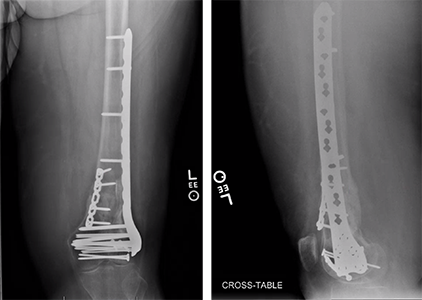
The aim of the current review was to provide an estimate of the impact of hip fracture on older people’s abilities over the long term. Many studies of hip fracture outcomes have been conducted but their findings regarding the long-term impact of hip fracture on independence in terms of mobility, activities of daily living (ADL) and life participation for older people are yet to be synthesised. Many older people who experience a hip fracture fail to fully recover. In high-income countries, most hip fractures are treated surgically, with admission to acute hospital care and, at times, a subsequent admission to a rehabilitation facility. However while the age specific incidence is decreasing in a number of countries, population ageing in higher income countries is driving increases in the prevalence of hip fracture. Growth is also anticipated in other highly populated areas of the world, including countries in Asia, the Middle East and South America . The highest aged-standardised rates of hip fracture due to osteoporosis are in North America and Europe. The estimated annual prevalence of hip fractures globally is expected to reach 4.5 million by 2050. An estimated 95 % of hip fractures are due to falls. Hip fractures are a common consequence of falls in older people and are particularly devastating in terms of their impact on an individual’s health and abilities. The relative contribution of physiological ageing, chronic disease and inactivity to this deterioration is not yet understood but it is clear that there is an increased risk of fragility fractures, fractures that occur as a result of a low energy trauma (a fall from standing height or less) with increasing age. With increased age, there is a decrease in bone mineral density as well as muscle mass and strength and the risk of falls and fall related injury increases. The health of bones, muscles and joints commonly deteriorates with advancing age. The greater understanding we have of the conditions that predominantly affect older people, the more prepared society can be to maximise health, opportunities and societal contributions for older people. World-wide, people are living longer, with an increase in the proportion of older people in the population. Future studies should measure impact on life participation and determine the proportion of people that regain their pre-fracture level of functioning to investigate strategies for improving these important outcomes. These studies indicate the range of current outcomes rather than potential improvements with different interventional approaches. Hip fracture has a substantial impact on older peoples’ medium- to longer-term abilities, function, quality of life and accommodation. Few studies reported impact on participation in domestic, community, social and civic life.
:max_bytes(150000):strip_icc()/physical-therapy-after-ankle-fracture-2696531_v1-bf75f6bc0334467ab63054ce6f6845d2.gif)
In Western nations, 10–20 % of hip fracture patients are institutionalised following fracture. Fewer people living in residential care recovered their level of function than those living in the community. For people independent in self-care pre-fracture, 20–60 % required assistance for various tasks 1 and 2 years after fracture. Between 40 and 60 % of study participants recovered their pre-fracture level of mobility and ability to perform instrumental activities of daily living, while 40–70 % regained their level of independence for basic activities of daily living. The bulk of recovery of walking ability and activities for daily living occurred within 6 months after fracture. Hip fracture survivors experienced significantly worse mobility, independence in function, health, quality of life and higher rates of institutionalisation than age matched controls. Most followed a clearly defined sample from the time of fracture. Thirty-eight studies from 42 publications were included for review. Risk of bias was assessed according to four items from the Strengthening the Reporting of Observational Studies in Epidemiology (STROBE) statement.

Outcomes of mobility, participation in domestic and community activities, health, accommodation or quality of life were categorised according to the World Health Organization’s International Classification of Functioning and synthesised narratively. Cohort studies of hip fracture patients reporting outcomes 3 months post-fracture or longer were included for review.

Studies were identified through PubMed and Scopus searches and contact with experts. This review aims to quantify the impact of hip fracture on older people’s abilities and quality of life over the long term. Hip fractures are an increasingly common consequence of falls in older people that are associated with a high risk of death and reduced function.


 0 kommentar(er)
0 kommentar(er)
